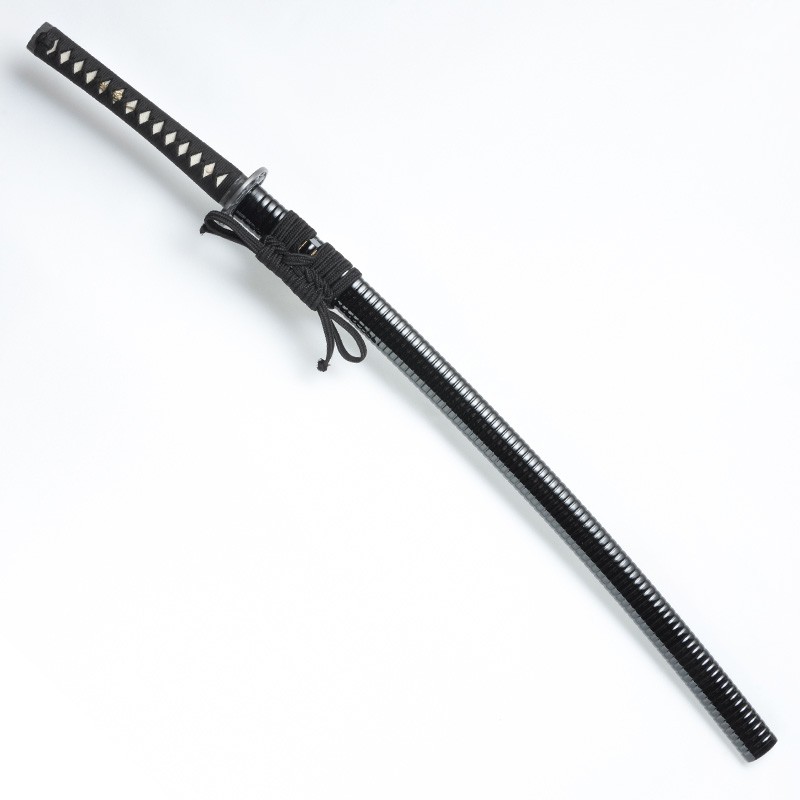














More informations about this product
This Yagyu Koshirae 柳生拵 is a Owari Koshirae mount, dating from the mid-17th century and designed by Yagyu Toshikane (1625-1694), representative of the Owari branch of the Yagyu family. The Yagyu Shinkage Ryu Saber School (Yagyu Style of the New Shadow School), founded in the 16thth century by Yagyu Sekushusai Muneyoshi, is one of the oldest saber schools still taught today.
This sword school was used and popularized under Oda Nobunaga, with whom the Yagyu clan had some influence. Toyotomi Hideyoshi dispersed the Yagyu clan, which then regained its nobility with Ieyasu Tokugawa. Yagyu Munenori even became the weapon master of Ieyasu Tokugawa. The Yagyu Shinkage Ryu School was taught to 3 Shogun Tokugawa, including the principles, in a book written by Yagyu Munenori, «The Sword of Life», which is as important and known as Miyamoto Musashi’s 5 Wheel Martial Treaty (Gorin no Sho).
The features of this mount are various. Yagyu Toshikane wanted a tsuba less wide but thicker than the trend of the time, with openings (Sukashi), which would best suit his style of sword practice. The Tsuka (handle) is slightly concave towards the Fuchi, in the style of the Tensho and Akechi Koshirae. The Fuchi Kashira are of Fog pattern (Kasumi - 霞), which corresponds to acting in the hidden shadow of the Yagyu Shinkage school. The menuki are “inverted” (Sakasa) compared to other mounts, they are in the palm, rather than under the fingers, which corresponds to the mountings of the Tachi, in cavalry saber. Last but not least, the Saya Inro, made of glossy ribbed lacquer that is specific to this assembly.
The blade type for this fixture is a light (standard) blade, approximately 820g.
Nagasa length possible from 2.20尺 (66.6cm) to 2.55尺 (77.3cm).
size charts (see attached table of recommended sizes)
Hamon: Suguha (straight line).
Habaki: Shonai (old-fashioned design), made of brass.
Tsuba: Round shaped (Maru Gata) with wheel and wave design 波車 (Nami Kuruma) in openings (Sukashi)
Fuchi/ Kashira: Fuchi Kashira with Mist 霞 (Kasumi) design.
Same: in Galuchat (Roussette or Raie) of White color
Menuki: Peony (Botan - 牡丹) Symbol of bravery, honor, prosperity and strength, the stiff stem allowing it to stay upright even in the wind and rain. It is also a symbol of protective force. Sakasa mount (inverted).
Tsuka Ito: Hineri Maki braiding of black cotton handle.
Sageo: Black cotton.
Saya: Inro type (印呂), with a glossy black ringed lacquer, specific to the Yagyu model. Gilded Shitodome.
The Minosaka Workshops :
The Iaito we offer come from Minosaka workshops in Gifu, Japan, and are manufactured in their workshop in Japan.
Gifu is one of the top places known for the forging of traditional sabres, including the Mino tradition, dating from the 14th century. Minosaka workshops are Iaito’s leading producers of tradition.
This traditional workshop manufactures its chrome-plated Zamak Iaito (Zinc and Aluminum alloy with some Copper) which is stainless.
This non-ferrous alloy makes the Iaito blunt and unsharpenable:
They are practical tools for Kata, without contact between the blades.
Share your opinion
error Your review appreciation cannot be sent
feedback Report comment
check_circle Report sent
error Your report cannot be sent